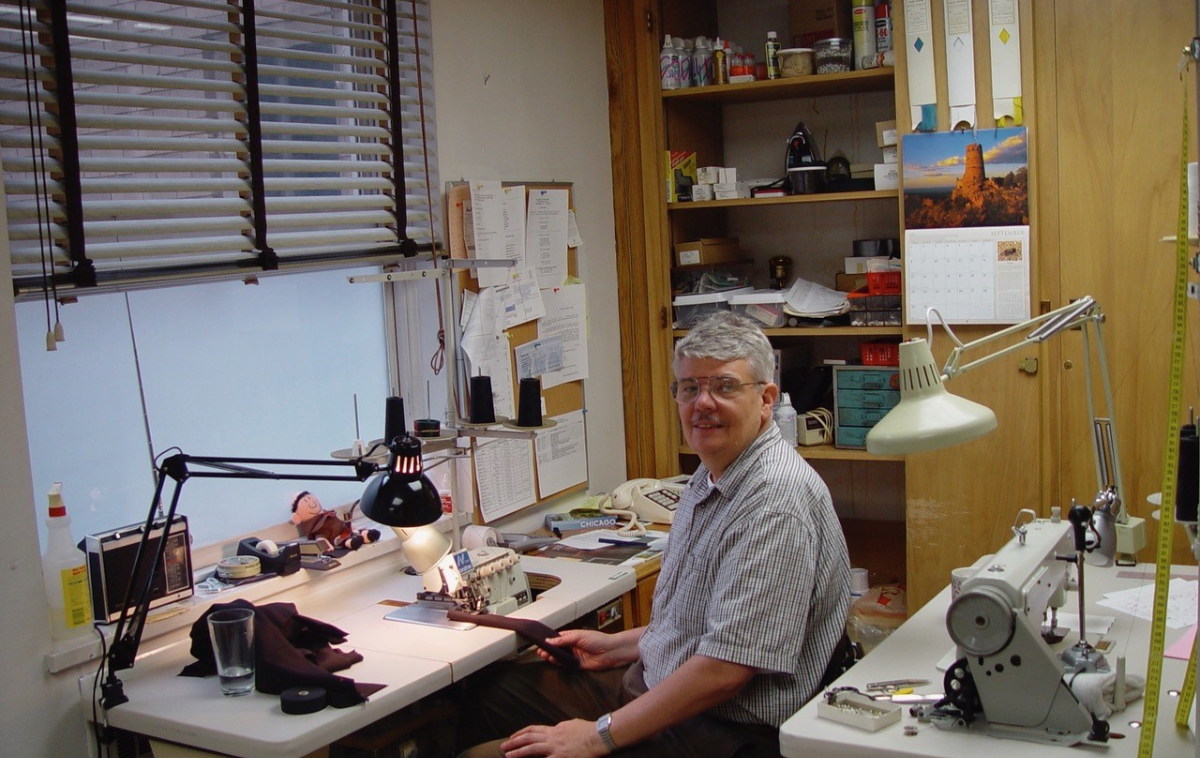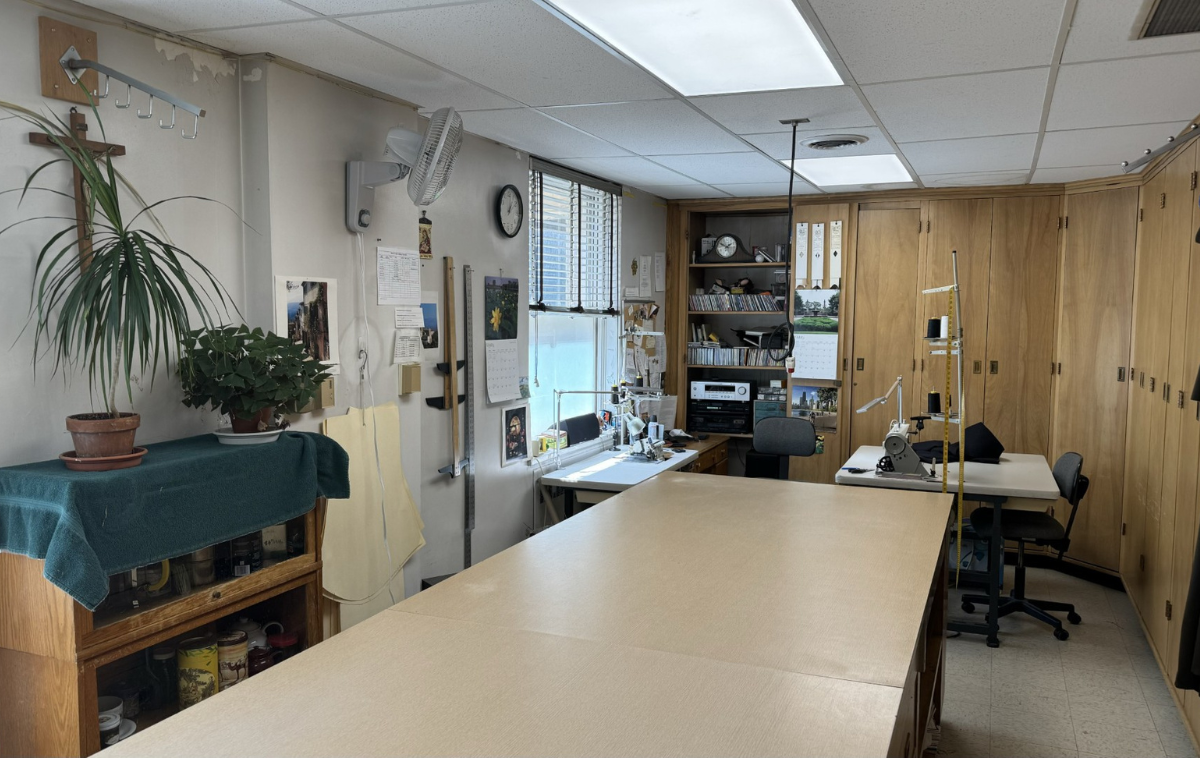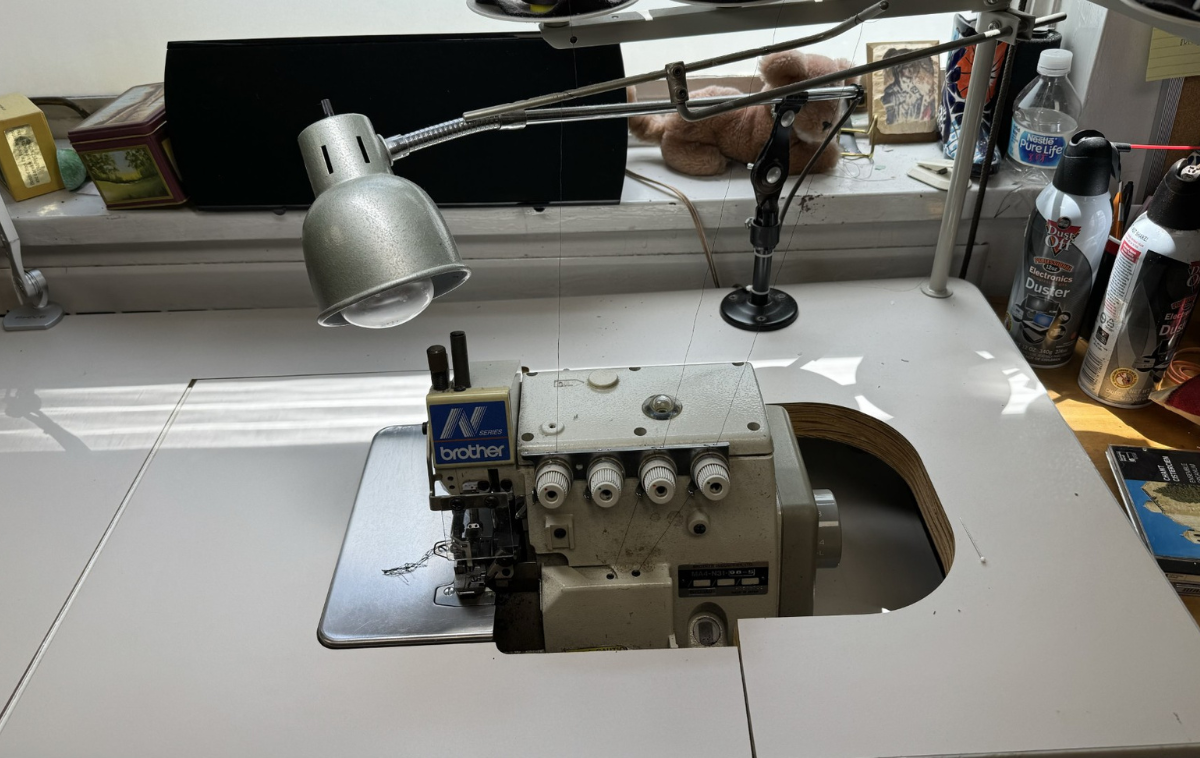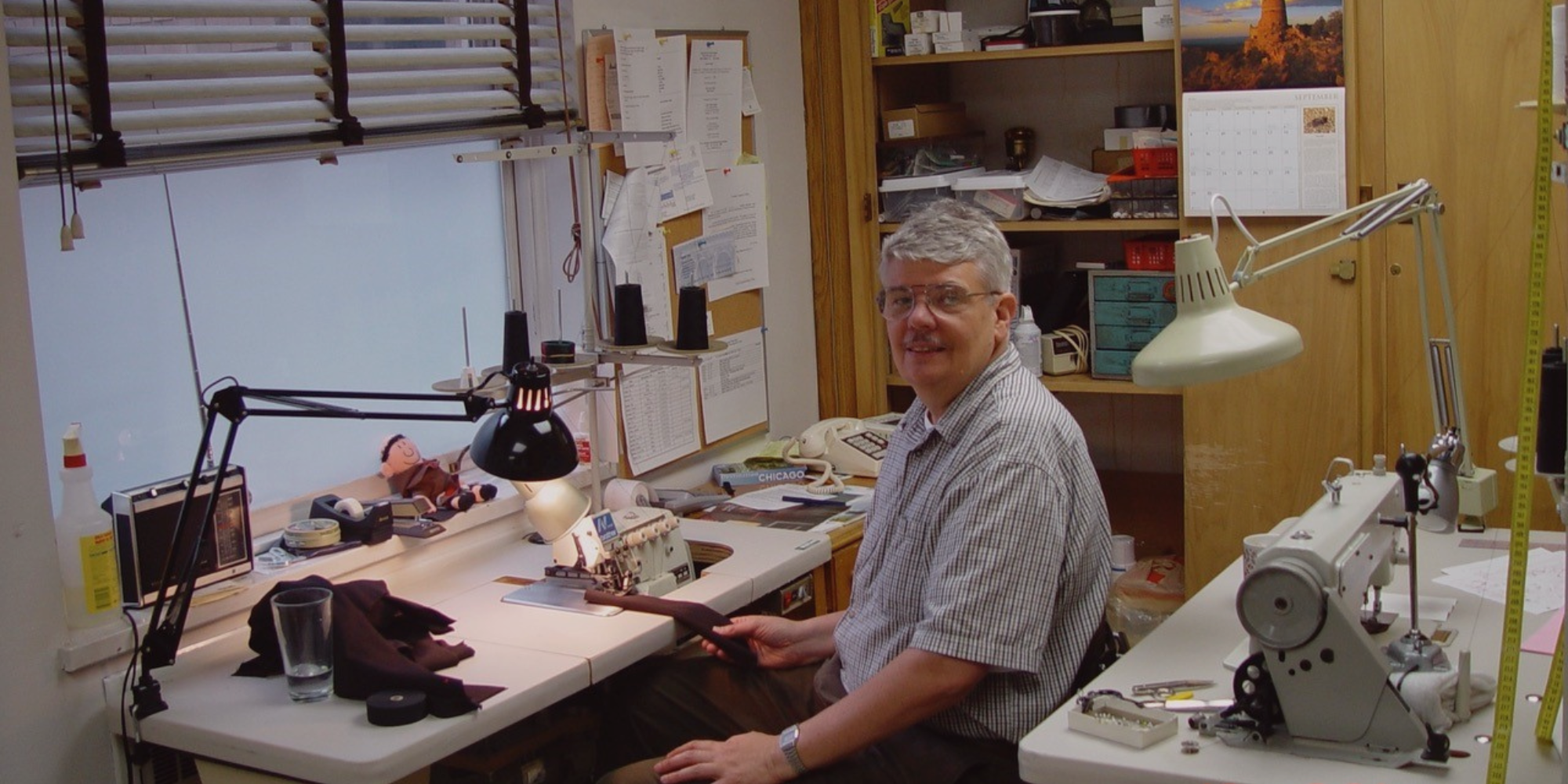Serving with his craft: Br. Raymond Shuhert is stitching habits at age 80
Date Published: June 04, 2024
By Eli Pacheco
Br. Raymond Shuhert’s stitch in time as a Franciscan friar came in a classroom 60 years ago, when he involuntarily turned in his stew pot for a sewing machine.
Who knows what feasts he could have prepared had he stayed on the culinary course. But a master of brothers made the executive decision: there were two cooks in the class, so Br. Raymond was fated to become a tailor instead, creating habits – the brown robes worn by Franciscan friars.
“I’d never even sat at a sewing machine,” said Br. Raymond, who now serves at St. Peter’s in the Loop in Chicago after a long stint in various jobs, including bookkeeper and porter, in Sacred Heart Province before the unification of five provinces in October 2023. “My mother had done all that.”
Br. Raymond has become a man of the cloth of a very tactile kind. He has fashioned a career of service, learned stitches and techniques, familiarizing himself with the raw materials that are the very fabric of the friars’ distinctive look.
He worked this job both as a young man and an older man and saw a stark difference.
His hardy Brother sewing machines – one industrial model, one serger for clean seems and quicker work – are now in their fourth decade of service. Br. Raymond took over as provincial tailor in 2002, after the standing tailor died on Christmas Eve 2001.
He asked permission to fill a position he knew he could fill.
“It had been more than 25 years since I had done any sewing, much less making a habit,” Br. Raymond said. But with retraining from the late Brothers Fred Smith, OFM, and Theophane Ballman, OFM, he was soon back in the habit of making habits.
As he relearned, he made drawings and took photos of the craft for prosperity.
“When I was a younger friar, I often found the job boring, because I had to work alone so much,” Br. Raymond said. “When I returned to sewing in my late 50s, I had changed and now I enjoyed working alone and being my own boss.”

Once destined to become a province cook, Br. Raymond Shuhert was redirected to train as a tailor. “Looking back over my life, I feel privileged to have been a tailor and doing my part to share our Franciscan journey,” he said.
'Called to live my life for God’
As a farm boy in Dubuque, Iowa, growing crops and raising chickens, Br. Raymond felt called “to live my life for God,” he said.
He attended Loras College in his hometown for a year and considered the priesthood. But he struggled with Latin, and in that pre-Vatican II era, Latin was required to celebrate Mass.
"I continued to feel drawn to giving my life to God in some type of ministry; more and more I questioned myself in the ministry of the priest,” he said.
At 19, he joined the Order of Friars Minor and began a three-year postulancy at St. Paschal Brothers School in the Chicago suburb of Westmont, Illinois. “Right away I felt at home with the brothers,” he said.

Br. Raymond has plenty of room to create Franciscan habits.
Weaving tales
When you spend a lifetime crafting the signature habit friars have worn for 800 years, you learn some things. Br. Raymond has a lot of knowledge to share. A sampling:
How long does it take to make a habit?
In his younger years, Br. Raymond said he could configure and complete a habit in about three or four days.
"Now it just takes me longer – but I know that now my technique is better,” he said.
Br. Raymond has persevered, and said he hopes to continue making habits for his Franciscan brothers as long as he is able.
“As I age, I am mostly in good health, but like all older people, I just have less energy than I used to,” he said. “I feel privileged to serve the brotherhood with my talents.”
Perpetual patterns
Once there was a pattern for habits that specified sleeves had to extend to the knuckles. It included a pencil pocket and a pocket for watches – before wristwatches were used.
“Those days have come and gone,” Br. Raymond said. The Capuchins had a solid pattern that fit the standard, but they traced it too much, and it got out of alignment, he said.
Br. Raymond and other tailors are on the pursuit to devise the ideal habit, trying to adjust to one the unified province can adapt for all friars. A booklet Austrian friars gave Br. Raymond during a trip to Rome might hold the key.
“To get it right, you need to learn from others,” he said.
Fabric for Franciscan habits
“You can’t keep a habit too long,” Br. Raymond said. “It is not worth it. After a while, if you put a patch on it, it will rip apart.”
At one point, the material that was used for habits was custom-dyed. Over time, it became blacker and blacker. Br. Raymond said Br. Gerald Bleem, OFM, helped to find a local fabric provider.
“He has such a sense of color, he found a different fabric for us to use,” Br. Raymond said.
Habits once were 100% wool. Today the ideal fabric, suitable for friar life, comes from Peru. It is 45% wool, 55% polyester.
“It’s not wash-and-wear,” Br. Raymond said. “But it is beautiful cloth and easy to work with. Wool and polyester are a good combination.”

This Brothers Industrial serger is for cleaner seams and quicker work. It’s one of two sewing machines Br. Raymond uses in his shop.

Br. Raymond’s sewing machines – including this model – were 10 years old when he got them in 2002, the year he first became province tailor. It’s more than 30 years old, “but still works perfectly,” Br. Raymond said.
United in habits
“Every province has a different set of patterns,” Br. Raymond said. “We will make the decision now that we have combined. And we will settle on whoever the tailor is.”
It will not be Br. Raymond, he said, but he hopes to help in any way possible.
“It would not be fair to friars waiting for their new habits,” he said. “I know younger people will carry on the ministry of friar habit-making into the future. Looking back over my life, I feel privileged to have been a tailor and doing my part to share our Franciscan journey.”

